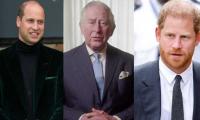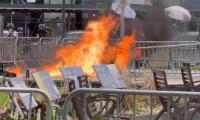By the end of April this year in one of the countries hardest-hit by Covid-19, an oil-rich nation of some 300 million people including a large Muslim population, more than one in five households did not have enough to eat.
Even prior to the pandemic, the situation had been dire with nearly 14 percent of the population dependent on food aid, one in every six children not having consistent access to food and nearly a million suffering from chronic malnutrition. The situation is today complicated not just by disease which has claimed tens of thousands of lives but also by tribally driven, political unrest and fears of bloodshed should the results of the fast-approaching November presidential elections be disputed.
Following violent clashes between protesters and police as well as reports of looting, the military has been called out into the streets to preserve order. Journalists have been especially targeted by authorities in the crackdown and thousands of demonstrators across the country have been arrested. The political unrest also appears to have been inflamed by the fact that the pandemic has mostly devastated historically poor and marginalised communities including ethnic minorities and immigrants.
What does a humanitarian crisis look like? What sorts of images does the phrase call forth? The Humanitarian Coalition, a grouping of Canadian aid agencies, defines a humanitarian emergency as "an event or series of events that represents a critical threat to the health, safety, security or wellbeing of a community or other large group of people, usually over a wide area". It goes on to point out that humanitarian emergencies arise when man-made or natural disasters affect poor and vulnerable populations – such as children, the poor, and immigrants or refugees – who are unable to fend for themselves. By this definition, would you say the situation in the United States over the last few weeks described above qualifies?
It can be a bit disconcerting to think about how humanitarian crises around the world are reported on and the stereotypes embedded in the language that is used. When events happen in certain parts of the world, the media is apt to use particularly colourful descriptions and adjectives – you rarely hear the United Kingdom described as an oil-rich, island nation presided over by an ageing monarch - as well as more vivid imagery – just compare the published photographs of COVID-19 in Europe and the US with those of the 2014 Ebola crisis in West Africa. This is partly because journalists, especially that anachronistic breed – the foreign correspondent – are stuck in a bygone age. Many still produce reports utilising tropes that exoticise parts of the world and that are aimed at "home" audiences but which will be published online and seen by people across the world, including their subjects. This generates unnecessary dissonances and controversies.
But the descriptions also reflect a less innocent attribute of the current world order – that it is based on and perpetuates a racist international hierarchy with white Europe (and her diaspora in North America and Australia) at the top and Black Africa at the bottom. In this telling, the "developed" nations of the "global north" are the custodians of wealth and civilisation and the "global south" is the site of poverty, natural maladies and crises. It is the humanitarian duty, so the story goes, of the enlightened West to help out her less fortunate neighbours who are cursed by incompetent and kleptocratic governance as well as a proclivity to have too many babies.
This framing is also evident in how the media reports other stories. For example, when authoritarian presidents in the developing countries appoint close relatives with no experience to senior government positions, use their offices to enrich themselves and their cronies, use police forces to clobber peaceful protesters and meddle with voter registration to prevent opposition supporters from casting their ballots, they are normally called out for what they are: Brutal, nepotistic, corrupt, power-hungry regimes. When it happens in the US, much softer language is employed. Elections, for example, may be interfered with or voting suppressed, but are not actually rigged or stolen. Nepotistic, corrupt and brutal are not constant adjectives that are welded to descriptions of the Trump administration (which is also almost never referred to using the evil-sounding descriptor, "regime").
Portraying the world like this has real-life consequences. It allows both audiences and policymakers to construct an alternate reality where the globe is divided between honest, hardworking and benevolent whites on the one hand, and lazy, incompetent, poverty-stricken Black people on the other.
Excerpted from: 'What makes a 'humanitarian crisis'?'
Courtesy: AlJazeera.com







